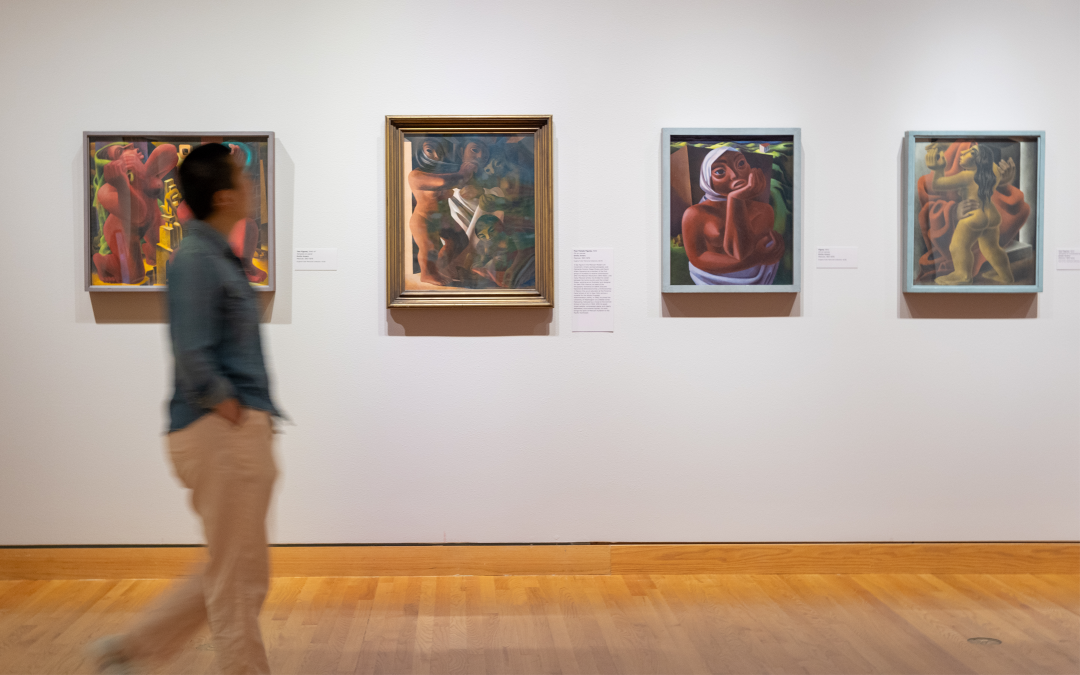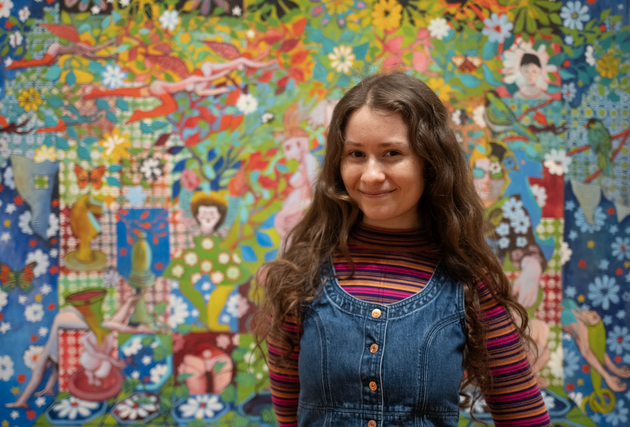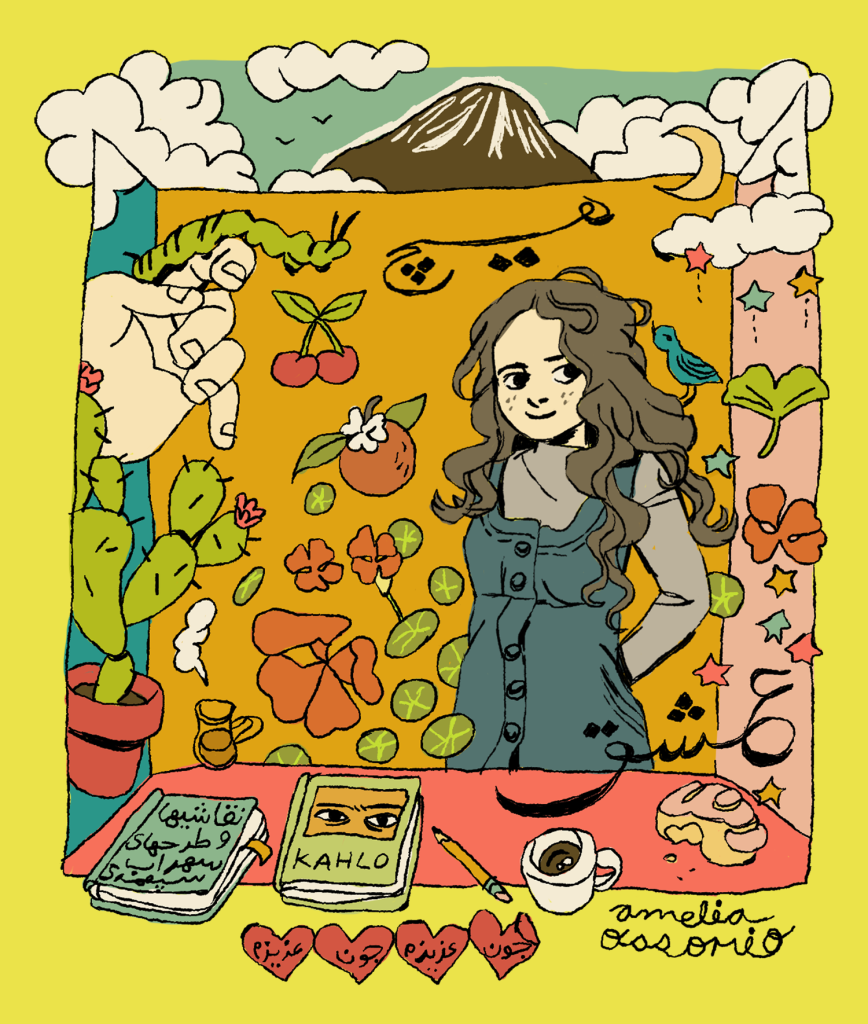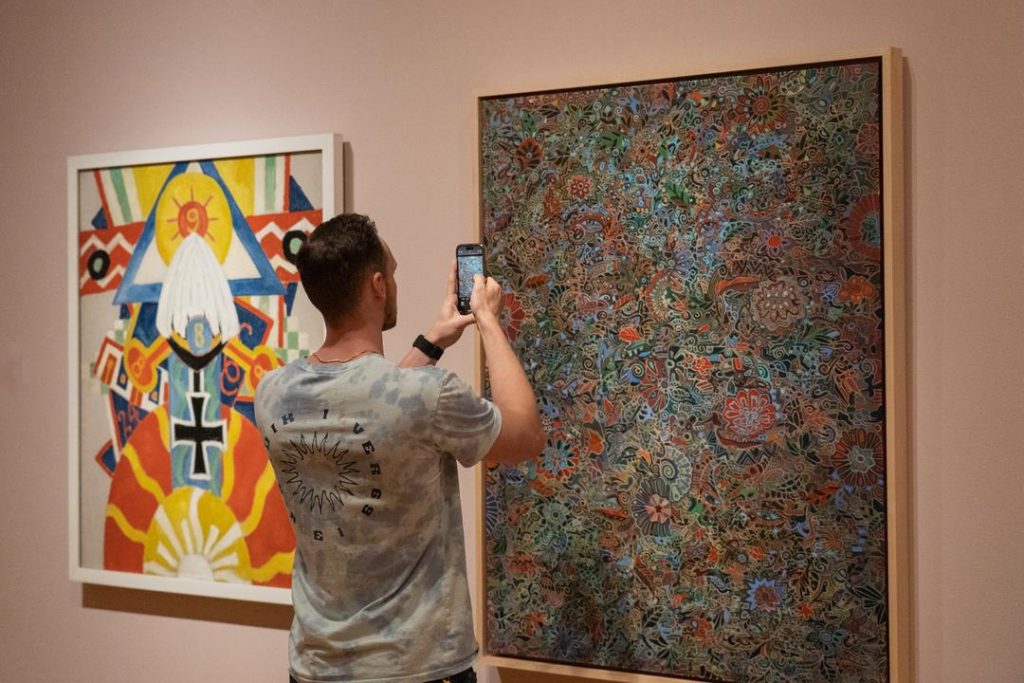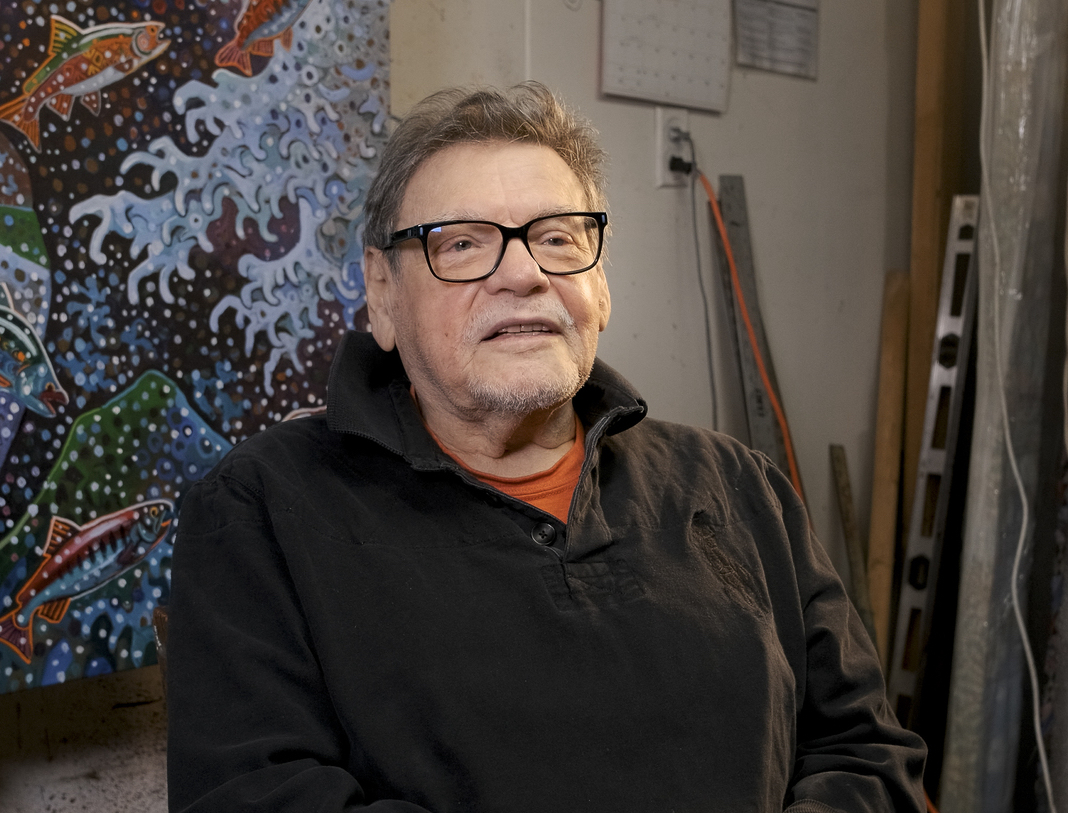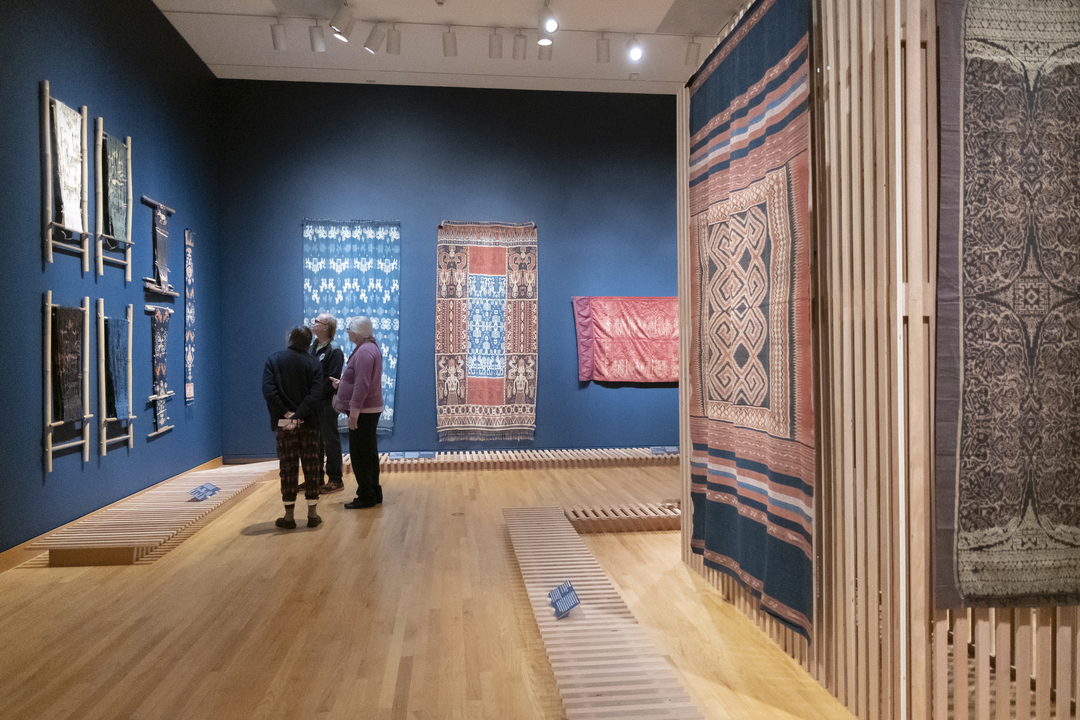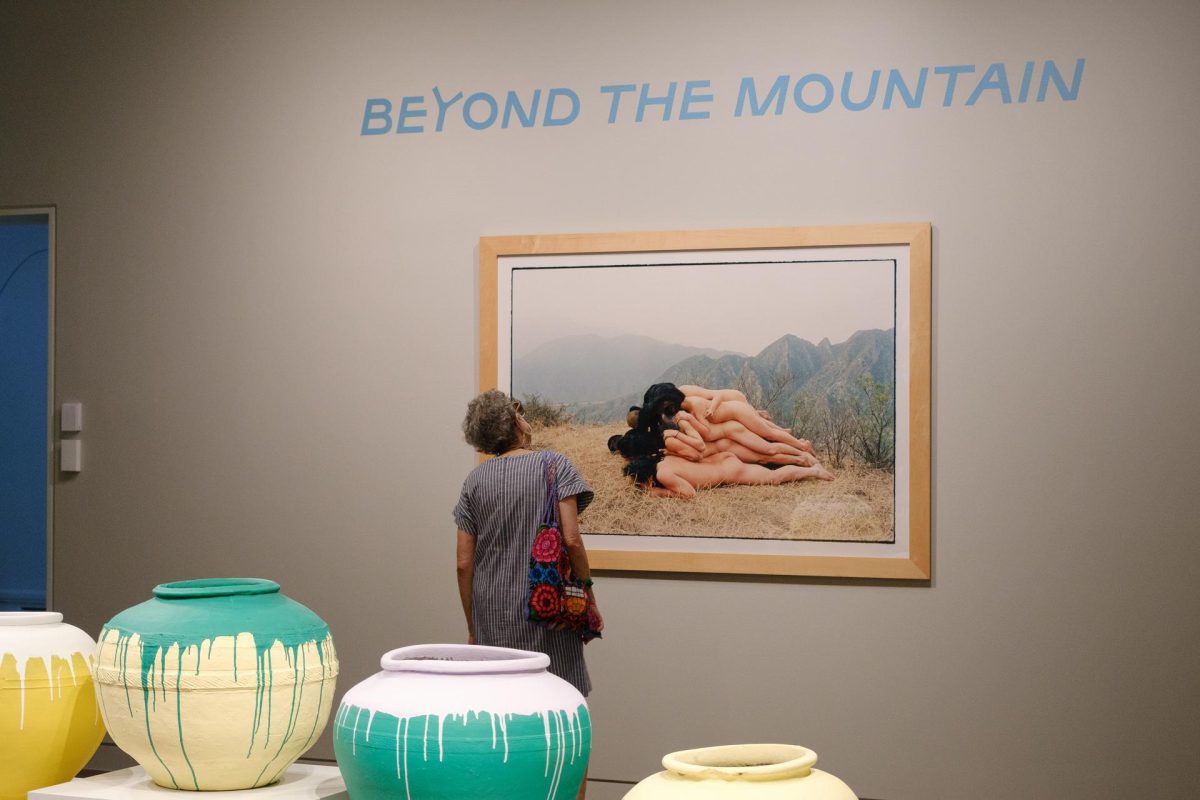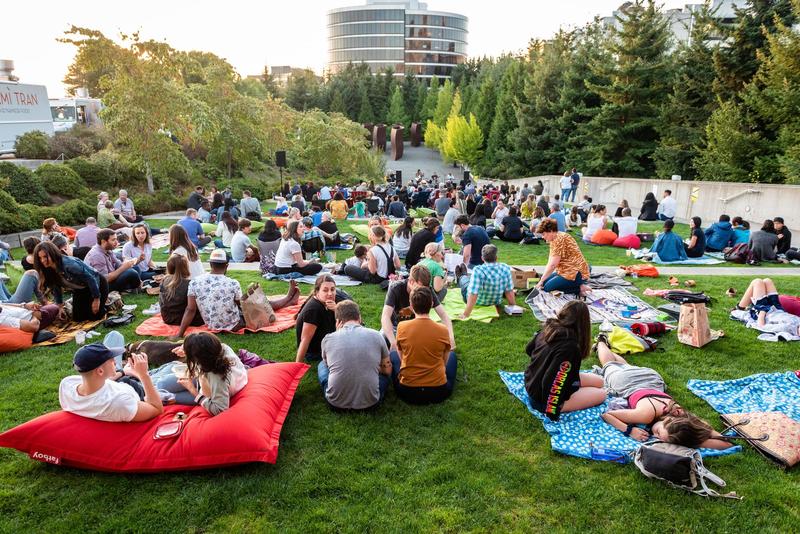Hispanic Heritage Month 2025: Explore works from talented artists at SAM
Happy Hispanic Heritage Month! This annual celebration—recognized between September 15 and October 15—honors the contributions and influence of Hispanic and Latinx Americans to the history, culture, and achievements of the United States. In honor of the holiday, we’re spotlighting four Hispanic and Latinx American artists with thought-provoking pieces in SAM’s permanent collection.
Alfredo Arreguín
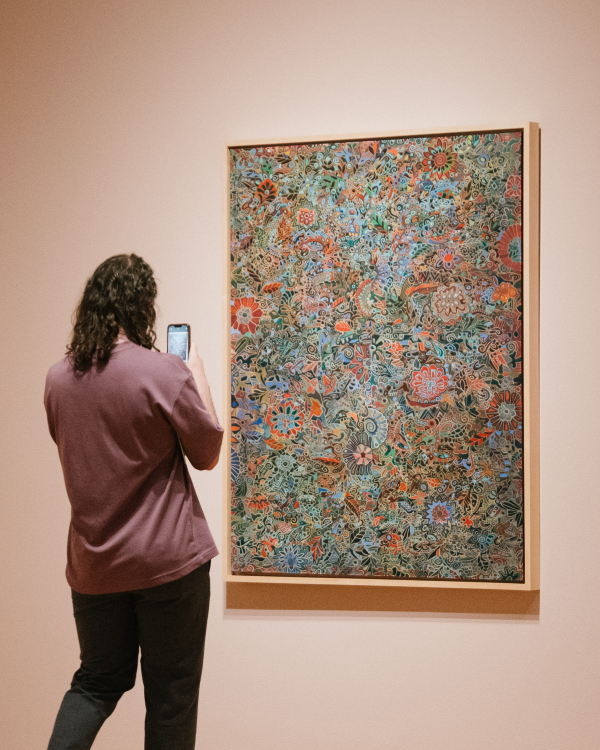
Alfredo Arreguín was one of the Pacific Northwest’s most prominent Chicano artists. SAM has five of his pieces in our collection, including the striking canvas Four Self-Portraits (1995).
Arreguín painted nearly his entire life, starting his craft at age 9. After graduating from the prestigious Escuela Nacional Preparatoria at the University of Mexico, he moved to Seattle to study architecture, interior design, and art at the University of Washington.
Layered with bright colors, intricate patterns, and hidden symbols, Arreguín’s mosaic masterpieces blend his internal and external surroundings. Through his art, he explored the natural and spiritual environments of both Mexico and the Pacific Northwest, crafting tapestries that reflected his multifaceted identity, cultural heritage, and adopted hometown.
Sadly, Arreguín passed away in 2023—but his legacy lives on at the Seattle Art Museum in our ongoing exhibition “American Art: The Stories We Carry.” (Learn more about Arreguín in our 2023 blog post by Theresa Papanickolas, SAM Ann M. Barwick Curator of American Art.)
Isabella Villaseñor
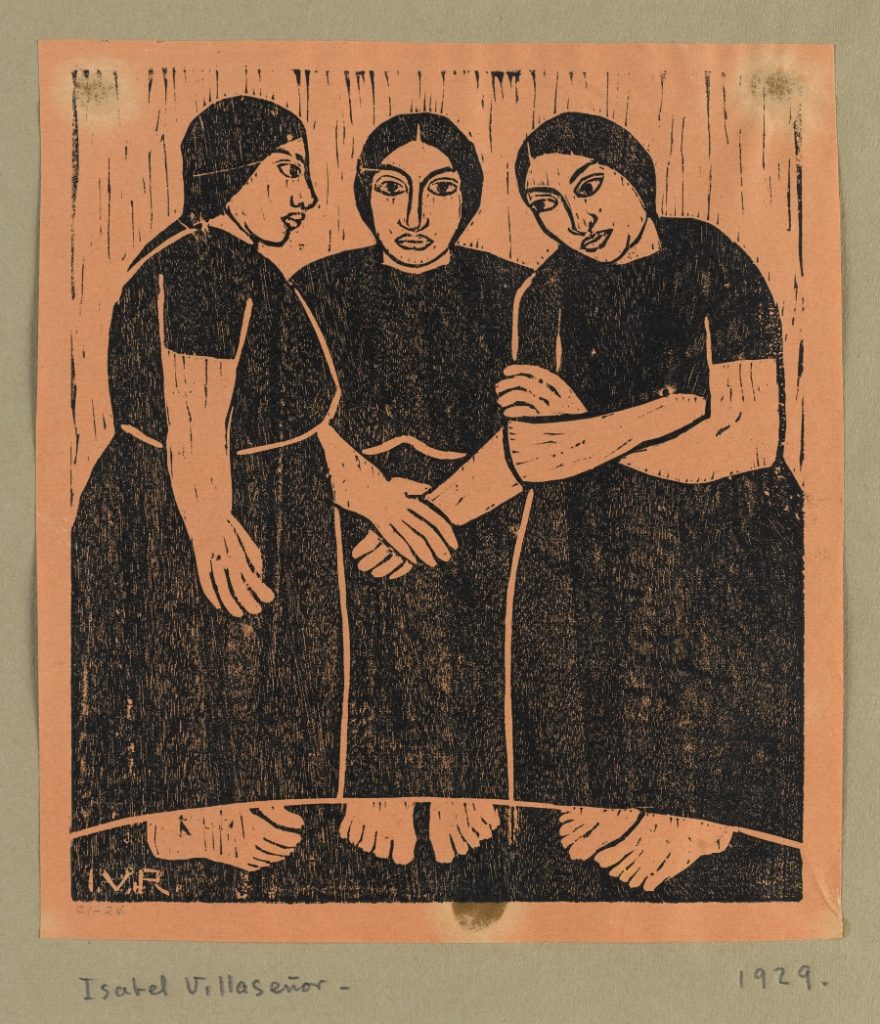
From sculpting to composing, post-revolutionary Mexican artist Isabella Villaseñor was a woman of nearly all creative trades. She is well-known for her woodcut prints, such as Grabado en Madera (1929) in SAM’s permanent collection.
Growing up in Mexico City, Villaseñor inherited a love of popular Mexican music and had an intrinsic knack for writing, winning numerous literary awards. She then pursued art at Centro Popular de Pintura, where she developed her signature style in engravings and paintings.
Her engravings and paintings often featured women in the domestic sphere. Villaseñor’s woodcut print Grabado en Madera depicts three women huddling together in conversation, connecting over personal stories or community gossip. Through her signature linework, shading, and composition, Villaseñor’s dichromatic artwork tells a powerful story of womanhood and connection.
Villaseñor died in her early 40s, but her multifaceted art—including work with revolutionary artist group ¡30-30!—left a major impact.
Paloma Contreras Lomas
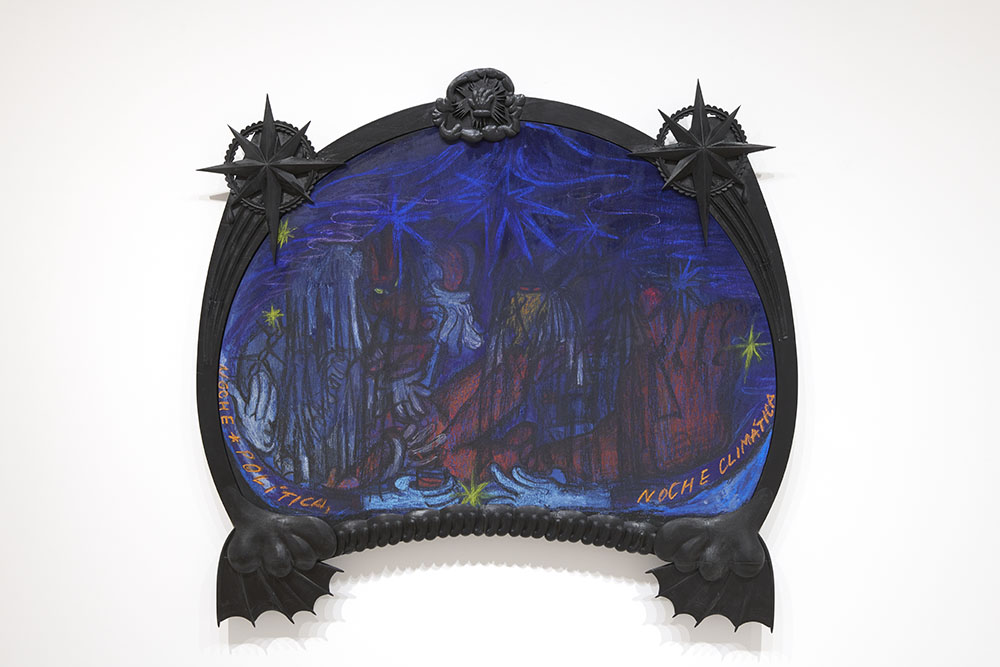
Paloma Contreras Lomas, a mixed media artist who uses her work to tackle contemporary issues, particularly those facing her home country of Mexico. She also addresses injustices that resonate universally: gender, violence, inequitable political structures, class differences, post-colonialism, and the destruction of the environment.
Contreras Lomas utilizes multiple types of media in her art, demonstrated in her piece from SAM’s collection, El ciudadano más oscuro (el árbol que mira), which translates to “The darkest citizen (the tree that watches).”
Using graphite, charcoal, pastel, and oil stick, she covers a framed piece of linen canvas with hidden symbols to address stereotypes of Mexican culture. Her work often incorporates the aesthetics of horror films and the macabre, while also using pop culture, color, and cartoon figures that add an ironic and often humorous lens.
Emilio Amero
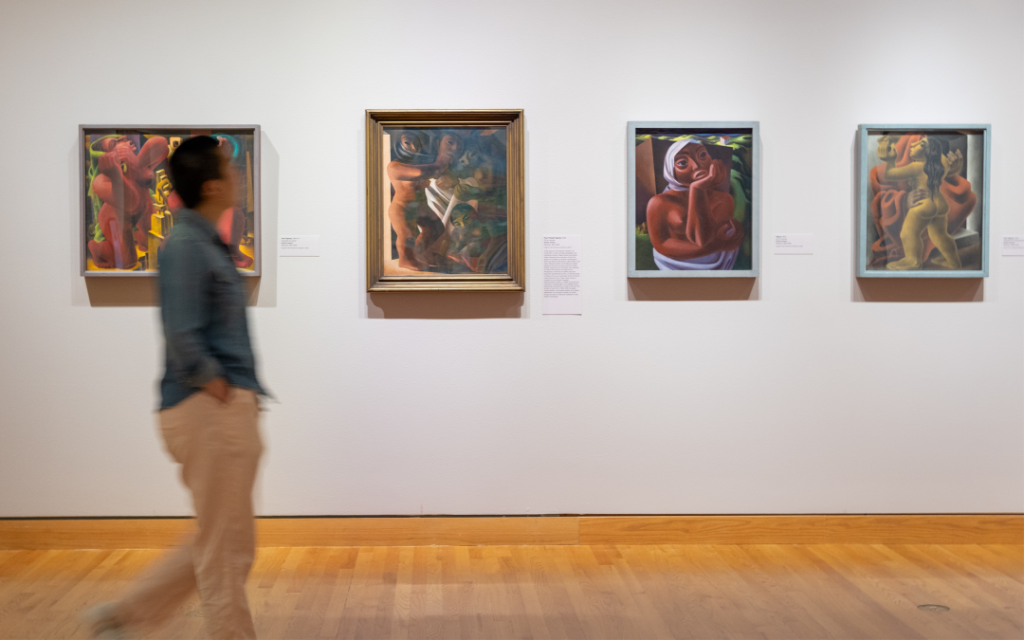
Emilio Amero was a major figure of the Mexican Modern art movement. Though he only lived in the Pacific Northwest for six years, Amero—a painter, printmaker, muralist, and filmmaker—made a significant impact on Seattle’s art scene and SAM’s collection.
After training as an artist in Mexico City, he worked between Mexico and New York City for many years, including a stint as an assistant to painter Diego Rivera. In 1941, Amero received a teaching fellowship at the University of Washington and then taught at the Cornish College of the Arts.
Some of his pieces were purchased by SAM’s first director, Richard Fuller, as early as 1942. (Today, 46 of his works are in SAM’s collection.) In 1946, Amero received an honorable mention in oil for his painting, Four Female Figures, at the Annual Exhibition of Northwest Artists held by SAM. He went on to serve as the jury chairman for several years.
His surrealist works depict scenes that are more metaphorical and allegorical than realistic representations. Amero’s modernism and experimentation with form and composition was influenced by the mural traditions he learned at home, as well as ancient Indigenous art of Mexico.
—Nicole Block, Curatorial Manager of SAM’s permanent collection, and Sara Butler, Marketing Copywriter at SAM
